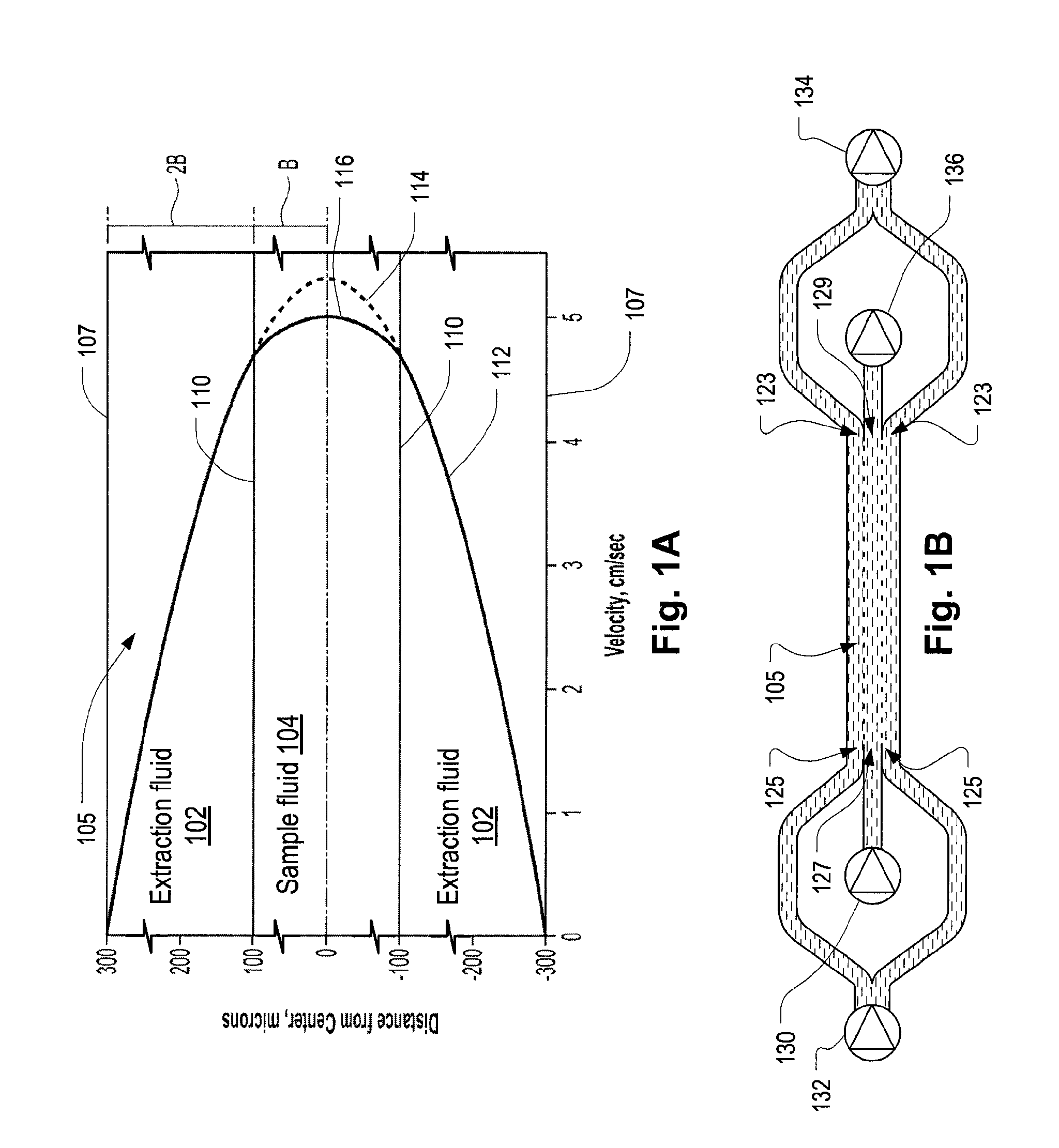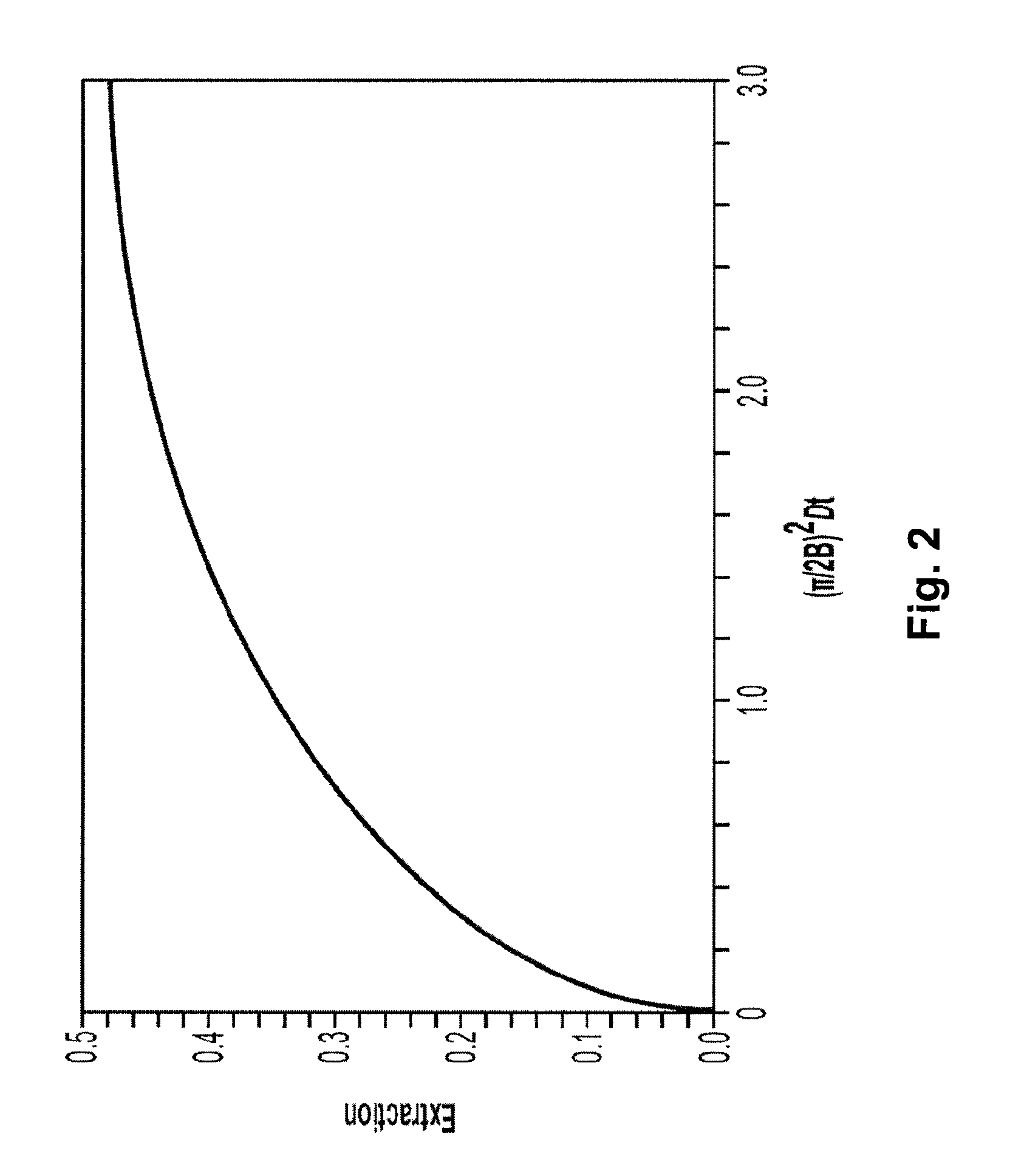Systems and methods of microfluidic membraneless exchange using filtration of extraction outlet streams
a technology of microfluidic membrane and outlet stream, which is applied in the direction of water/sewage treatment by extraction, feed/discharge of settling tank, osmosis/dialysis, etc. it can solve the problems of limited use of blood processing techniques employing immiscible liquids, complicated prolongation of life, and few patients on dialysis are ever completely rehabilitated. , to achieve the effect of facilitating the surface cleaning of the filter, reducing the number o
- Summary
- Abstract
- Description
- Claims
- Application Information
AI Technical Summary
Benefits of technology
Problems solved by technology
Method used
Image
Examples
Embodiment Construction
[0052]An exchange device extracts selected components from a sample fluid. The exchange device passes an extraction fluid and a sample fluid in laminar flow through a common extraction channel such that the extraction and sample fluids come in direct contact, but remain in defined layers throughout the common extraction channel. Preferably, the extraction channel has dimensions that assure laminar flow conditions are maintained even under conditions of normal use and that permit a large interface area between the sample and extraction fluids in a compact design. As such, the channel and its related components have the dimensions which may be characterized by the term, microfluidic.
[0053]Referring to FIGS. 1A and 1B, in a preferred configuration, the sample fluid 104 is blood, which flows in a layer that is sandwiched between two extraction fluid layers 102 all of which flow together through an extraction channel 105. Relative to the oriented drawing page in FIG. 1A, the extraction c...
PUM
 Login to View More
Login to View More Abstract
Description
Claims
Application Information
 Login to View More
Login to View More - R&D
- Intellectual Property
- Life Sciences
- Materials
- Tech Scout
- Unparalleled Data Quality
- Higher Quality Content
- 60% Fewer Hallucinations
Browse by: Latest US Patents, China's latest patents, Technical Efficacy Thesaurus, Application Domain, Technology Topic, Popular Technical Reports.
© 2025 PatSnap. All rights reserved.Legal|Privacy policy|Modern Slavery Act Transparency Statement|Sitemap|About US| Contact US: help@patsnap.com



